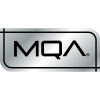Hi idealdreams,
As you stated there is a voluminous history of allergen threads relating to the overall section 2.8.2 which contains yr OP. IMO it reflects the degree of confusion in its presentation / interpretation.
After a review, I have concluded that the contents of my previous posts were incorrect due to my misunderstanding SQF's requirements for 2.8.2.1.i. Not entirely to my surprise and sorry for that ( my comments were probably more appropriate to the full SQF, FS Plan).
I suggest yr consideration of 2 short threads (links below) which contain IMO possible responses to yr request regarding para.2.8.2.1.i From Marshenko and Spurs Girl respectively.
The former has less scope but more semi-quantitative detail (although for allergens its matrix would IMO have a choice of 0% / 100% severity* and perhaps (some) arbitrary estimated likelihoods of 0%<X<100% if cross-contact involved.**
The latter loooks to involve more communicative effort due its scope but perhaps provides more "directly meaningful" rankings. The scope is maybe 'flexible" from a SQF auditorial POV, eg restrictable to the auditee's site only?. 
Regardless, I deduce both presentations were equally SQF acceptable as far as 2.8.2.1.i was concerned.
I noted that para 2.8.2.1.iv suggests that an explicit indication as to whether the allergen is present in an intentional (=intrinsic) or cross-contact scenario may be expected. This is self-evident in Spurs Girl's ranking system and perhaps numerically so in Marshenko's.**
http://www.ifsqn.com...isk-assessment/
http://www.ifsqn.com...ade-lubricants/
* the severity could be ranked via data such as VITAL but i doubt that it's SQF-expected. Although 2.8.2.1.ix rather suggests otherwise for certain cases.
** the table shown is ambiguous as to whether a solely Y/N entry is made in the "allergen" column + the justification column
PS - Only another 8 paragraphs to go !


















